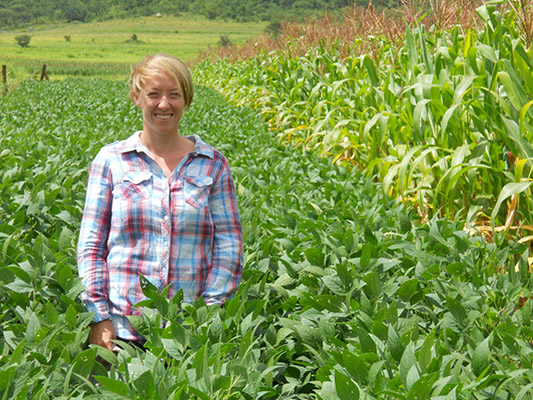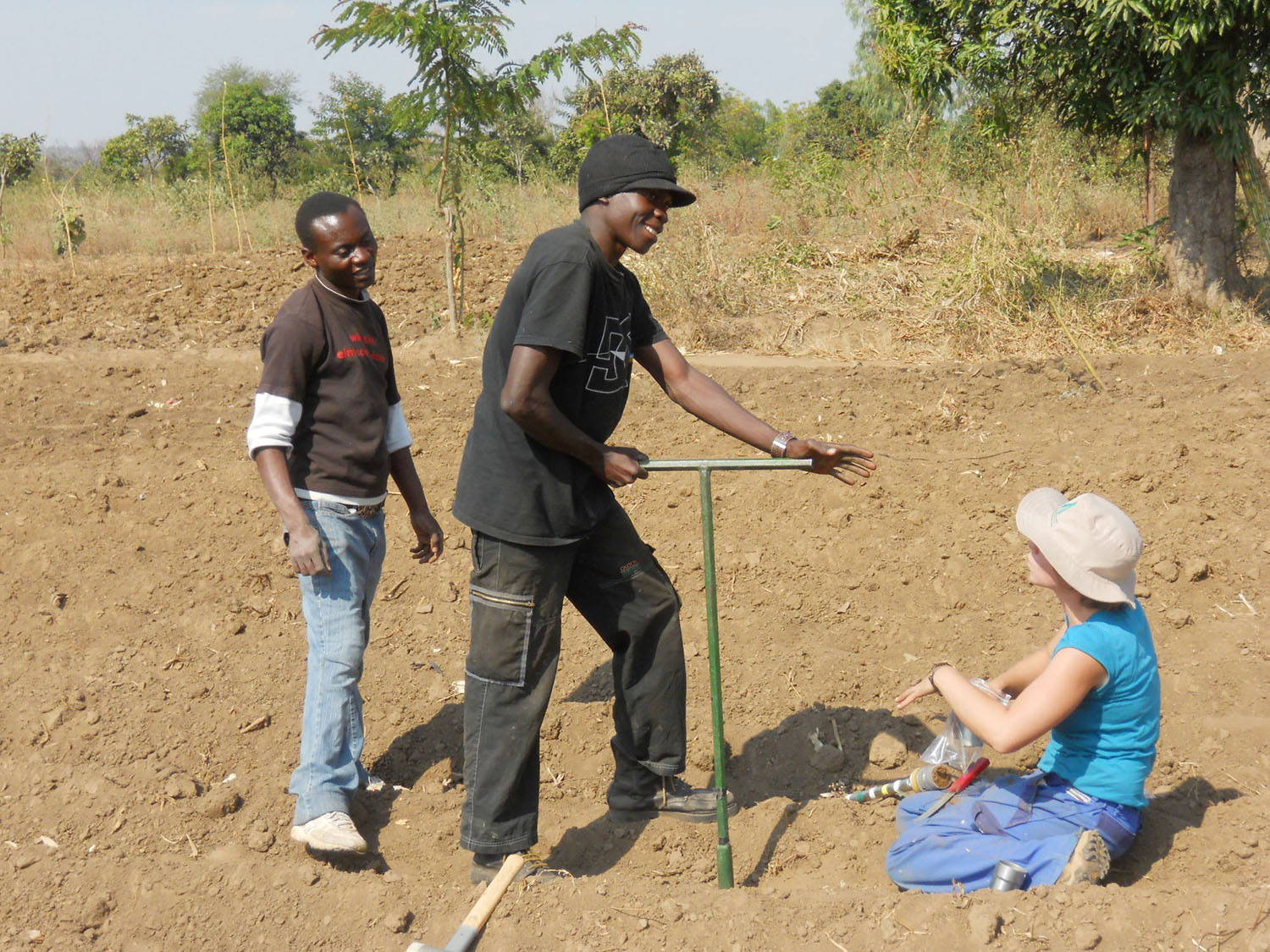
A new study led by ETH Zürich graduate Stephanie Cheesman, along with CIMMYT senior agronomist Christian Thierfelder, Neal S. Eash from the University of Tennessee, Girma Tesfahun Kassie, ICARDA, and Emmanuel Frossard, professor at ETH Zürich, found limited increase in carbon sequestration under conservation agriculture (CA) after up to seven years of practice. In this interview, Cheesman tells us why carbon sequestration is such a complex issue in Southern Africa and what this study reveals about how it can improve.
Q: Why is increasing soil carbon important?
A: Besides the hype about sequestering carbon to contribute to climate change mitigation, carbon is an integral part of soil organic matter (also referred to as “humus”), which is possibly the most well-known fertility component of a soil. Soil carbon has strong influence on soil structure, water infiltration, as well as the capacity of the soil to retain water and nutrients that are required for plant growth. Degraded soil has only a little soil carbon and, hence, low fertility and nutrient- (and water) holding capacity.
Q: What were you hoping this study would reveal?
A: Although the study trials had been running for only seven years, I was hoping to show a clearer trend towards an increase in soil carbon under CA as compared to conventional practices (CP) in Southern Africa. We were surprised that, in most cases, the carbon under CA was at the same level as the conventional control treatment, with a few exceptions. Nevertheless, this is one of a very few studies where soil carbon stocks in CA systems have been analyzed across a wide range of Southern African agroecologies. I am now very happy to share this data with the wider research community.
Q: What factors limit carbon sequestration in Southern Africa?
A: There are a range of factors that limit carbon sequestration. Our findings suggest low productivity to be one of the main bottlenecks. Farmers have to decide if they should feed the crop residues to the soil or to their livestock. The long dry season from May to November and high temperatures further increase the mineralization of soil carbon, which can be twice as much as in temperate regions. Another factor that may limit carbon sequestration is the limited use of other strategies such as the integration of legumes or agroforestry species as intercrops in maize-based systems.

Q: Given the findings of this study, how can we increase soil carbon in Southern Africa in the future? Is conservation agriculture necessarily the answer?
A: Unfortunately, our study lacks initial carbon stock measurements, as this was tested on a very large set of on-farm trials and we never had enough financial resources to continuously test this from the onset. We could compare the difference between CA and CP but not how carbon stocks changed over time in the respective systems. Although some of the trial sites were up to seven years old, this is a comparably short time to increase the level of carbon in such environments. From other long-term studies (mainly in the Americas), we know that tillage-based agricultural systems decrease carbon stocks. Thus, I would say that a system like CA where tillage is reduced and residues are “fed” to the soil will more likely maintain soil carbon and maybe gradually increase it in the longer term. Tillage-based agricultural systems also have much higher soil erosion loads which further decreases carbon, so CA is definitely an answer to reduce soil degradation.
CIMMYT’s mission is to “sustainably” increase the productivity of maize- and wheat-based systems to reduce poverty and hunger. By combining improved varieties with sustainable intensification practices, CIMMYT does its best to give smallholder farmers options to improve their productivity and livelihoods. Feeding the soil with residues is one strategy to maintain or gradually increase soil carbon but we should not forget the immediate needs of farmers.
 Capacity development
Capacity development